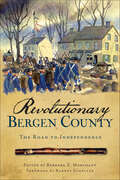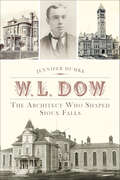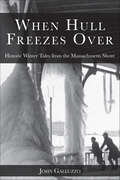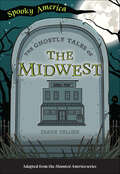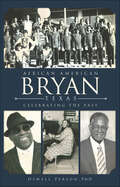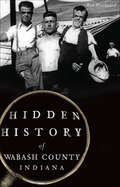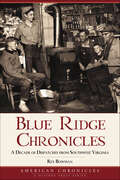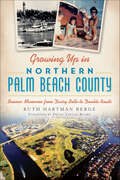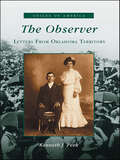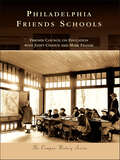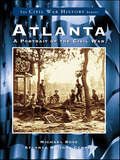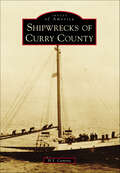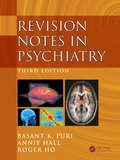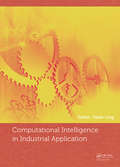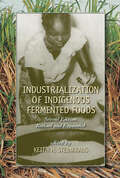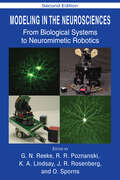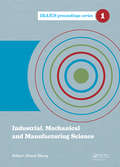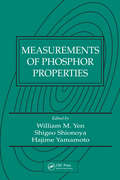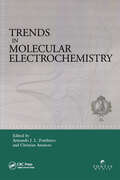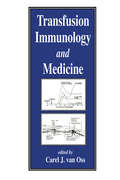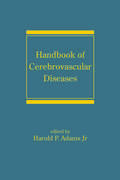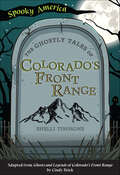- Table View
- List View
Revolutionary Bergen County: The Road to Independence
by Barbara Z. MarchantAlong the banks of the Hudson River, New Jersey's Bergen County endured much of the brunt of the Revolutionary War. With an impressive compilation of scholarly essays, Barbara Z. Marchant and company vividly portray those who found their lives altered by the conflict, from famous military men, such as George Washington, who attained glory on the battlefields to ordinary citizens like Helen Brasher, who simply wanted to protect her children from the ravages of war. Revolutionary Bergen County explores the struggles and the dramas played out in the homes and on the fields of New Jersey.
W.L. Dow: The Architect Who Shaped Sioux Falls
by Jennifer DumkeWallace L. Dow's enduring legacy is visible throughout Sioux Falls and across South Dakota. His distinctive structures, whether civic buildings or private residences, are beholden to no single architectural style. A New Hampshire native, Dow was brought to the Dakota Territory in the 1880s by Governor Nehemiah Ordway. Dow quickly established himself as the preeminent architect of the Dakota prairie, designing iconic structures like Sioux Falls Courthouse and the penitentiary, as well as many beautiful private residences. Using local Sioux quartzite, Dow's buildings gave the emerging Dakota Territory an identity. Yet the architect himself remains something of a mystery. Join author and Dow documentarian Jennifer Dumke as she uncovers Dow's story, recounting the life and work of a true Sioux Falls original who left his mark statewide.
When Hull Freezes Over: Historic Winter Tales from the Massachusetts Shore (American Chronicles)
by John J. GalluzzoThe peninsular community of Hull, Massachusetts, reaches a total of seven thin, sandy miles into Boston Harbor, forming a protective barrier against intruding navies and pounding waves. Unfortunately for those residents who choose to live here for the three miles of crescent-shaped beach and its attendant summer advantages, exposure to the sea during the winter months can be, at times, trying, to say the least. When Hull Freezes Over, by lifelong Hull resident and columnist John Galluzzo, is a collection of historic tales that look beyond the sunny days of summer and remember the other nine months of life along this scenic shore. From shipwrecks and drownings, to subzero temperatures and frigid arctic gales, locals have learned to enjoy their seasonal solitude, and especially enjoy the holiday season in ways only New England peninsula dwellers can.
The Ghostly Tales of the Midwest (Spooky America)
by Diane TelgenGhost stories from the Midwestern United States have never been so creepy, fun, and full of mystery! The haunted history of the Midwest comes to life—even when the main players are dead. Visit Ohio, the oldest state in the Midwest, to glimpse ghosts in the Butler County Historical Museum. Or travel to Crown Point, Indiana, and see Ruffle Shirt Hill&’s Underground Railroad site. Dive into this spooky chapter book for suspenseful tales of bumps in the night, paranormal investigations, and the unexplained all across America&’s Midwestern states; just be sure to keep the light on.
African American Bryan, Texas: Celebrating the Past (American Heritage)
by Oswell Person PhDBryan was incorporated in 1872, but it would take more than ten years before its African American population was offered schooling. Nothing would come easy for them, but they persevered through hard work, ingenuity and family support. The success of today's generation is a direct result of determined, hardworking pioneers like Dr. Samuel J. Sealey Sr., Bryan's "baby doctor" in the 1930s and '40s, and Dr. William A. Hammond Sr., who opened Bryan's first black hospital and employed many blacks through his business ventures. Learn about the inspiration and guidance provided by the likes of Oliver Wayne Sadberry, an outstanding community leader and principal of Fairview and Washington Elementary. Dr. Oswell Person shares the story of this community's achievements, successes and contributions in the face of incredible odds.
Hidden History of Wabash County, Indiana (Hidden History)
by Ron WoodwardTake the road less traveled through Wabash County's forgotten stories and overlooked characters. Bob Printy may have run off to join the circus, but Jocko the monkey decided to make Wabash his home after he escaped a traveling carnival. Discover the story of Chief LeGros and learn what life was like in nineteenth-century Wabash County. Spend some time with Tommy R. Miller, who sacrificed his life caring for fellow servicemen in Vietnam. Author Ron Woodward shares the compelling, little-known history of this Indiana county.
Blue Ridge Chronicles: A Decade of Dispatches from Southwest Virginia (American Chronicles)
by Rex BowmanMany of the highlanders in Virginia�s western mountains live in small communities with names such as Stonebruise, Novelty, and Wangle Junction, and here their stories are chronicled by one of their own, Floyd County native and Pulitzer-nominated journalist Rex Bowman, roving reporter for the Richmond Times-Dispatch. Colorful characters abound, from folks in Independence who have a decades-old tradition of racing outhouses, to the brawlers in St. Paul who once gave the town a reputation for world-class wickedness, to the purveyors of Roanoke�s Texas Tavern who have never in seventy years put ketchup on their hamburgers. Blue Ridge Chronicles is a delightful look at how the lively have lived in Southwest Virginia�s backcountry.
Growing Up in Northern Palm Beach County: Boomer Memories from Dairy Belle to Double Roads
by Ruth Hartman BergeA childhood in Florida's charming Northern Palm Beach County creates genuine nostalgia for sun, sand and running barefoot under palm trees. Those memories include hurricanes and Hetzel Brothers Christmases, Sir Harry Oakes's haunted mansion and James Munroe Munyon's Fountain of Youth. The once quaint little coastal towns from Riviera Beach to Jupiter are now much larger, but the memories of s'mores and summer camps remain. Author Ruth Hartman Berge weaves memories of a boomer childhood in Northern Palm Beach County with the history of the people and the places so many loved in this glimpse into a Florida that no longer exists.
The Observer: Letters from Oklahoma Territory (Voices of America)
by Kenneth J. PeekR.H. Wessel was the owner, editor, and publisher of the Frederick Enterprise / Frederick Press, and a leading citizen from the day he first came to Frederick, Oklahoma, in 1902 until his death in 1956. He is best known for his column "The Observer," for which this book is titled. He left behind a considerable legacy of his adventurous life through letters, photographs, documents, and historic files. His experiences in Lawton during the 1901 Land Lottery and the following homestead years in Frederick are covered in this book.As a newspaperman, with a love for telling a story, his letters are an incredible documentation of life on the Oklahoma frontier, as well as his love story by mail with Margaret Scow, the bride he brought to Oklahoma after "proving up" on his homestead and obtaining his own newspaper.
Philadelphia Friends Schools: Friends Council on Education (Campus History)
by Friends Council on EducationWilliam Penn envisioned a society dedicated to religious toleration, participatory government, and liberty. Central to this Holy Experiment was his belief that all children deserved a moral education. In 1689, Penn established a Friends Public School in the commonwealth of Pennsylvania. Over the years, many Quakers have been similarly inspired, and today there are 81 member schools in the Friends Council on Education operating in 22 states. This book includes images from the 10 Friends schools founded in or near Philadelphia before the 20th century: Abington Friends School, Frankford Friends School, Friends� Central School, Friends Select School, George School, Germantown Friends School, Greene Street Friends School, Plymouth Meeting Friends School, William Penn Charter School, and Westtown School. Philadelphia Friends Schools tells the photographic story of an educational philosophy rooted in three centuries of faith and practice.
Atlanta: A Portrait of the Civil War (Civil War Series)
by Michael Rose Atlanta History CenterWhen the public envisions Atlanta during the Civil War, two primary images�of two unparalleled individuals�dominate: William Tecumseh Sherman and Scarlett O�Hara; however, there is more to the city�s Civil War heritage than a frowning general and a wily gentlewoman. Within the pages of Atlanta: A Portrait of the Civil War, discover the old city streets, period homes, and military fortifications of Atlanta in a number of rarely reproduced Civil War photographs. Taken from the Atlanta History Center�s visual arts collection, the images in this volume tell the story of the city as it was up to and during the Civil War. View the ruins of the Ponder House, the destruction of the rail lines, and the demolition of General Hood�s ordnance train. Informative captions complement this engaging collection of images, and include excerpts from diaries, letters, and memoirs regarding life in Atlanta during the war. Many of the photographs were taken by George N. Barnard and his staff during the Federal occupation of Atlanta in the fall of 1864, and again in 1866 as he planned a publication of war views. Atlanta: A Portrait of the Civil War offers a comprehensive view of the city during a war that continues to fascinate both professional and amateur historians alike.
Shipwrecks of Curry County (Images of America)
by H.S. ContinoHistorically, mariners considered the Oregon coast one of the most dangerous in the world. In 1852, explorers discovered gold in the rivers and along the beaches in Curry County, which is located in the southwestern corner of the state. Subsequent settlement concentrated on the coast. With few roads, water transportation was crucial for early settlers. The area contained many potential dangers to ships, including unpredictable weather, frequent fog, and submerged rocks and reefs. There have been many shipwrecks in the area like that of the tanker Larry Doheny, which was torpedoed by a Japanese submarine during World War II. Curry County is home to Cape Blanco, the second most westerly point in the continental United States, and Port Orford, the only open-water port on the Oregon coast (and one of only six "dolly" ports in the world). Modern technology and port improvements have reduced the number of shipwrecks, but accidents still occur.
Revision Notes in Psychiatry
by Basant Puri Annie Hall Roger HoRevision Notes in Psychiatry, Third Edition continues to provide a clear and contemporary summary of clinical psychiatry and the scientific fundamentals of the discipline. It is an essential study aid for all those preparing for postgraduate examinations in psychiatry and a superb reference for practising psychiatrists.Structured to follow the enti
Computational Intelligence in Industrial Application: Proceedings of the 2014 Pacific-Asia Workshop on Computer Science in Industrial Application (CIIA 2014), Singapore, December 8-9, 2014
by Yanlv LingThese proceedings of the 2014 Pacific-Asia Workshop on Computational Intelligence in Industrial Application (CIIA 2014) include 81 peer-reviewed papers. The topics covered in the book include: (1) Computer Intelligence, (2) Application of Computer Science and Communication, (3) Industrial Engineering, Product Design and Manufacturing, (4) Automatio
Industrialization of Indigenous Fermented Foods, Revised and Expanded (Food Science and Technology)
by Keith H. SteinkrausIndustrialization of Indigenous Fermented Foods, Second Edition presents the most recent innovations in the processing of a wide range of indigenous fermented foods ranging from soy sauce to African mageu. It serves as the only comprehensive review of indigenous fermented food manufacture from ancient production methods to industrialized processing
Topological Indices and Related Descriptors in QSAR and QSPR
by James Devillers Alexandru T. BalabanTopological Indices and Related Descriptors in QSAR and QSPR reviews the state of the art in this field and highlights the important advances in the generation of descriptors calculated directly from the structure of molecules. This long-awaited comprehensive book provides all the necessary information to calculate and use these descriptors for deriving structure-activity and structure-property relationships. Written by leading experts in the field, this book discusses the physicochemical significance, strengths, and weaknesses of these indices and presents numerous examples of applications. This book will be a valuable reference for anyone involved in the use of QSAR and QSPR in the pharmaceutical, applied chemical, and environmental sciences. It is also suitable for use as a supplementary textbook on related graduate level courses.
Modeling in the Neurosciences: From Biological Systems to Neuromimetic Robotics
by R. R. Poznanski G. N. Reeke K. A. Lindsay J. R. Rosenberg O. SpornsComputational models of neural networks have proven insufficient to accurately model brain function, mainly as a result of simplifications that ignore the physical reality of neuronal structure in favor of mathematically tractable algorithms and rules. Even the more biologically based "integrate and fire" and "compartmental" styles of modeling suff
Industrial, Mechanical and Manufacturing Science: Proceedings of the 2014 International Conference on Industrial, Mechanical and Manufacturing Science (ICIMMS 2014), June 12-13, 2014, Tianjin, China (IRAICS Proceedings)
by Dawei ZhengThis proceedings volume contains selected papers presented at the 2014 International Conference on Industrial, Mechanical and Manufacturing Science, held in Tianjin, China. Contributions cover the latest developments and advances in the field of Industrial, Mechanical and Manufacturing Science.
Measurements of Phosphor Properties
by William M. Yen Shigeo Shionoya Hajime YamamotoMeasuring the properties of phosphors is an essential step in developing and selecting phosphors for specific applications. Consisting of chapters drawn from the second edition of the best-selling Handbook of Phosphors, Measurements of Phosphor Properties outlines various methods for characterizing and measuring the optical and luminescence properties of phosphors. The book covers measurement in the vacuum-ultraviolet region, measurement of particle size and optical properties of phosphor powders, and relevant aspects of color vision in the human eye. It details the optical properties of powder layers, color vision, and other miscellanies. It concludes with a detailed history of phosphor technology and industry.
Trends in Molecular Electrochemistry
by Armando J.L. PombciroChemists increasingly apply electrochemical methods to the investigation of their systems, in particular towards a better understanding of molecular properties, the exploration of chemical reactions involving electron-transfer (ET), the initiation of further reactions by ET, the kinetic measurements, and the establishment of the reaction mechanisms
Transfusion Immunology and Medicine
by Carel J. van OssBased on the proceedings of the International Convocation on Immunology held recently at the State University of New York at Buffalo, this up-to-date resource provides a state-of-the-art examination of blood transfusion practice and its future possibilities.Explains the immunological effects of blood transfusion as well as its immunological and
Handbook of Cerebrovascular Diseases, Revised and Expanded (Neurological Disease and Therapy)
by Harold P. AdamsSpanning a wide array of topics relating to the diagnosis and treatment of cerebrovascular disease, this reference collects the latest studies and recommendations from a team of 75 leading authorities on the subject-including the management of subarachnoid hemorrhage, the treatment of acute ischemic stroke and aneurysms, and surgical interventions
Prohibition in Columbus, Ohio
by Alex TebbenThe Prohibition era often conjures up images of Tommy guns and speakeasies, but prohibition in Columbus added up to more than a crime stat sheet. It continued to dramatically shape the city far beyond its conclusion in 1933. The story begins with the temperance agitators who fought for decades for the elimination of alcohol. It is also the story of the families who made the alcohol, along with the neighborhood they built and then rebuilt in the Noble Experiment's aftermath. Alex Tebben relates how both temperance groups and the brewers adapted to the enforcement of the Eighteenth Amendment and the permanent mark it made on the city's heritage.
The Ghostly Tales of Colorado's Front Range (Spooky America)
by Shelli TimmonsWelcome to the spooky streets of Colorado's Front Range!Stay alert! Ghosts lurk around every corner. Even the most unexpected places might be haunted by wandering phantoms.Did you know that in an old courthouse, a ghostly little boy loves to leave handprints -- on the ceiling? Or that the old mining tunnels beneath many towns are haunted? Can you believe that two disembodied heads float through the Capitol building in Denver?Pulled right from history, these ghostly tales will change the way you see Colorado's Front Range, and have you sleeping with the light on!?????????????????????????????????????????????????????
Wicked Grand Rapids (Wicked)
by Amberrose HammondInvestigate the citizens of Grand Rapids, even those above suspicion, with author and local history enthusiast Amberrose Hammond as she uncovers a seedy cast of characters from the city's past. Meet career criminals like Clem Blood, who tore off all his clothes during sentencing, only to be presented with a new suit at public expense. Open a love letter from Grand Rapids' own Lonely Hearts killer, who lured his victims by direct mail. Unseal the habeas corpus proceedings for the gruesome details of what the "Grand Rapids Press" called "the most cold blooded crime in the history of the city." Stay out of the shadows, keep your doors locked and enjoy delving into the wicked side of the Furniture City.
